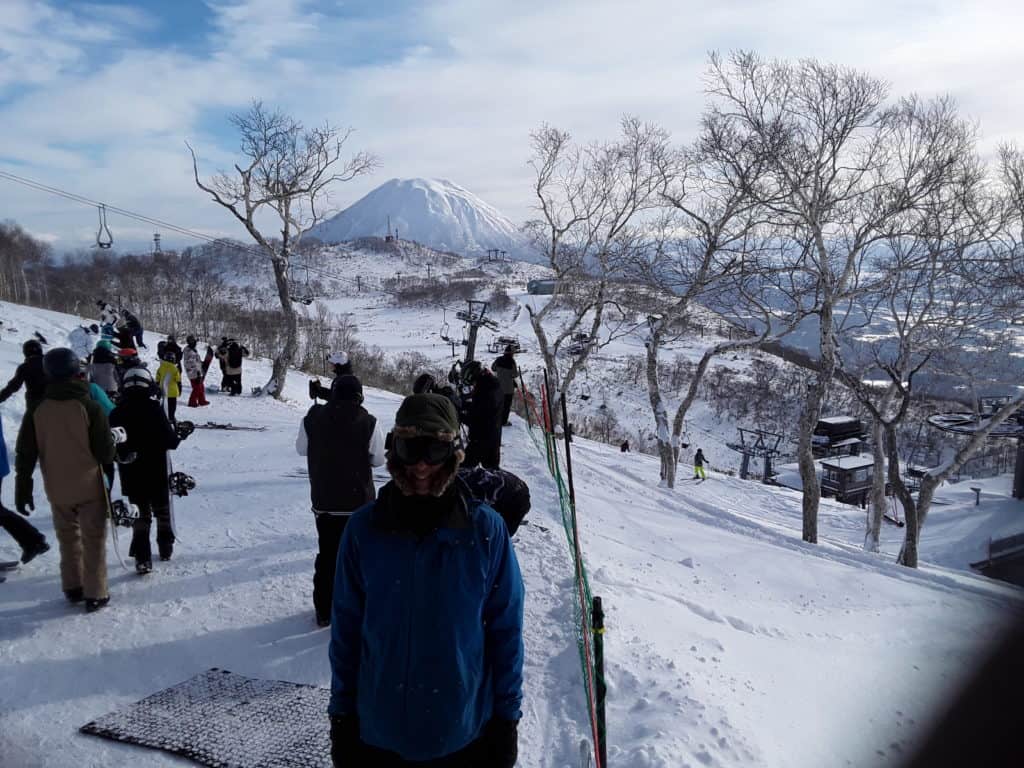
By Eesha Williams
My wife Elizabeth and I have lived in Vermont and skied at Killington since 2001. Elizabeth was born in Japan. She hadn’t been back since she was five. This year, we decided to go to Japan. Since she is a vegetable farmer (she owns the New Leaf CSA in Dummerston, Vermont) we could only go in winter. We decided to go skiing at Niseko, Japan.
We drove to Windsor Locks, Connecticut and left our car at the Amtrak station (free parking and more frequent trains than Vermont). We took Amtrak to New York City, spent the night at an Airbnb, and caught a nonstop flight to Tokyo. Plane fare was $720 round trip on Japan Airlines. In Tokyo we spent the night an outstanding airport hotel, the Nikko Narita (don’t miss the breakfast). Then we took the train to the other Tokyo airport to catch a flight to Sapporo. Trains in Japan are better than trains in the USA. We stayed at a farm near Sapporo for two days to learn about local winter vegetable production in greenhouses.

Then we took a train to Niseko. This was a beautiful ride along the Sea of Japan, 250 miles from Russia. When the train left the coast it followed a river steeply into the mountains, through forests and farmland. The owners of our hotel (the OAC Lodge — highly recommended, as long as you don’t mind shared bathrooms) picked us up at the Niseko train station, five minutes from the hotel and ski resorts.
Niseko gets more snow than any ski resort in the world.
We were there from Dec. 18-22, 2019. We had great ski conditions but the base was not yet deep enough for all the terrain to be open. The mountain is about the size of Killington. There were never any lift lines, even on a Saturday morning with six inches of fresh powder and sunshine. Lift tickets are $60 and even cheaper if you want to ski just one of the four resorts at Niseko. Three of the four resorts have gondolas.
Japan has the world’s longest life expectancy (85 years versus 79 in the USA) and excellent food. The average farm is much smaller in Japan than in the USA. Farms in Hokkaido (the island where Niseko is) raise vegetables, apples, wheat and rice. Japan has some of the world’s best restaurants (no city in the world has as many Michelin star restaurants as Tokyo). Even cheap restaurants (around $10 for dinner in Niseko) have high quality, delicious food, often with ingredients from local farms. We could see cows outside their barn from the window of our hotel.

Hotels in Japan cost about the same as in the USA. Japan is full of hot springs that you can sit in. We did this in Niseko as snow fell around us.
When I was 17 and 18, I worked for a ski season at Squaw Valley ski resort in California. A few years later, I worked for a ski season each at Copper Mountain in Colorado and Zugspitze, a ski resort that is in Austria and Germany. Apparently work visas are easy to get for Americans who want to work at Niseko. I think this would be a great way to spend a winter. By all accounts, the backcountry at Niseko is the best way to experience the vast amounts of powder that fall there. It would take more than a week’s visit to learn how to fully enjoy the Niseko backcountry. Avalanche safety training and/or a trained local guide is mandatory.
Elizabeth and I walked a mile or two on a quiet, snow covered road from our hotel to a Shinto shrine in Niseko. To get to the building one walks across a footbridge high over a small river, then climbs a long outdoor staircase through a beautiful forest.





